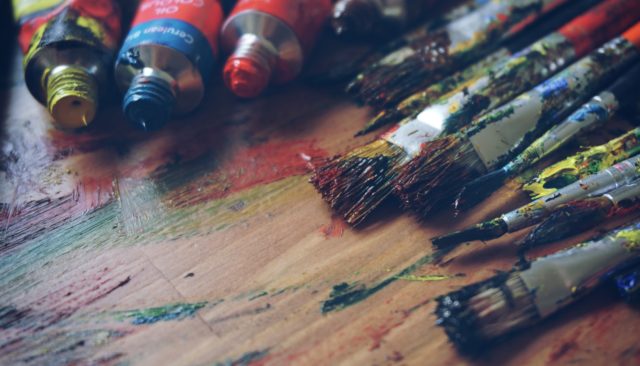Gallery Showcases Art from Survivors Who Say “Actually I Can”
October 19, 2019
Every person’s story is unique. The National Network to End Domestic Violence (NNEDV) supports survivors’ right to tell (or not tell) their story on their own terms. This can mean speaking out on a personal level to friends, family, and acquaintances, or connecting to other survivors on social media. Another way to speak out and share you story is through visual arts.
Earlier this year, NNEDV partnered with Thirty-One Gifts to offer survivors an opportunity to share an original piece of artwork incorporating the phrase “Actually I Can” in order to raise awareness about domestic violence and the possibility for healing. The responses were inspiring snapshots of self-discovery and transformation. We are privileged to share this gallery of submissions that shared different perspectives and pathways toward resilience and healing.
Art is a form of personal expression and storytelling and has therapeutic benefits [1]. There are several reasons why creative arts therapies might benefit survivors of domestic violence. For example, nonverbal techniques calm the deep regions in the right side of the brain, where trauma memories are stored [2]. Additionally, studies support the use of art therapy with survivors as a stress-management technique [3].
Whether someone considers themselves artistic or not, actively seeking out healthy outlets to process traumatic experiences, such as yoga, deep breathing, or writing, is already taking a step toward empowerment after surviving domestic violence. Healing from trauma is an ongoing process, but the fact that someone has experienced trauma does not have to define their entire life from that point forward. Learn more about trauma and healing with our tips and information for survivors and supporters.
Want to share how “Actually I Can” applies to your experience as a survivor? Submit a high-resolution digital copy of your piece incorporating this phrase to thirtyone[at]nnedv[dot]org and it will be added to the gallery.
[1] Uttley L, et al. “Systematic Review and Economic Modelling of the Clinical Effectiveness and Cost-effectiveness of Art Therapy among People with Non-psychotic Mental Health Disorders.” NIHR Journals Library; 2015 Mar. (Health Technology Assessment, No. 19.18.)
[2] Dawn McClelland, PhD, and Chris Gilyard, MA, “Calming Trauma – How Understanding the Brain Can Help,” Phoenix-Society.org.
[3] Cathy Malchiodi, “Creative Art Therapy: Brain-Wise Approaches to Violence,” PsychologyToday.com, October 16, 2013





